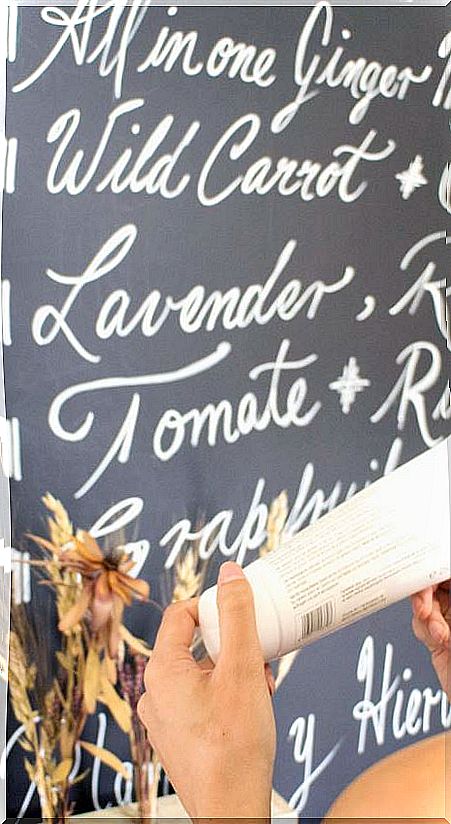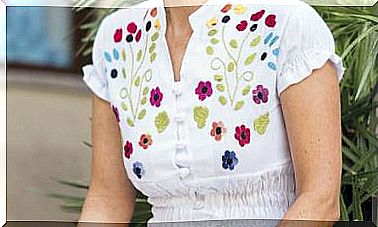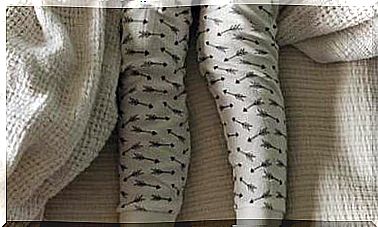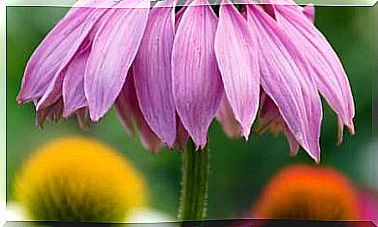Tags Without Secrets
Don’t be fooled! Discover what the International Nomenclature of Cosmetic Ingredients hides

As you will remember, in the previous post I briefly commented on how conventional and unconventional cosmetics are formulated.
I think it is important in this post to teach you to read these formulations when purchasing any beauty product (organic, natural or conventional) in the famous list of ingredients.
“The lower the quality of the product and the active ingredients, the greater the amount of synthetic ingredients that serve to lower costs and achieve a usable product”
It is very important not to trust the names or adjectives of the products without more. Most of the time they are claims to facilitate their sale.
The word ” eco ” is often synonymous with “economic” and is simply used as a pun to confuse the customer. The same with “Natural”, “Bio”, etc.
It is also very important to learn to read the INCI of what we buy, so as not to be fooled especially by those miracle products, which shout from the rooftops to be the solution to any problem … wrinkles, cellulite, aging, anti-aging among many other things.
Remember that the active principles present in any formulation are usually present in a relatively low percentage. And the cheaper the product, the lower the percentage will still be.
There are times when brands sell a product with a specific quality and with a specific asset that later, if we read and investigate, does not amount to 0.5% within the formulation.
List of ingredients
I start by telling you that the so-called INCI list (International Nomenclature of Cosmetic Ingredients) is the detailed list of ingredients that cosmetic products contain.
This list is required by law to manufacturers of cosmetics to inform the customer in detail of the ingredients of the formulation.
Each ingredient must appear on this list without exception and in descending order of concentration. Therefore, if an INCI list begins with Lavender Hydrolate for example, this would be the most abundant ingredient in the formulation.
If, for example, the INCI started with Prunus dulcis oil (Almond Oil), it means that the ingredient with the highest percentage present in said formulation is almond oil.
However, the actual percentages of each ingredient are never known with complete certainty, since the formulation is a laboratory secret and it is not mandatory to indicate them with such precision.
Normative
Within the regulations, if the dose of an ingredient is less than 1%, the place it occupies on the list can be modified. For this reason, many times there are products that indicate they have damascene rose extract, for example, and it is only present in 0.3% of the formulation.
The manufacturer can modify your order and place you among the top positions. In a way, deceiving the end consumer and thus achieving better marketing for the sale of the product.
This regulation is somewhat incongruous but nevertheless we have to give a vote of confidence to the product line that we are acquiring.
This list must always be visible on any product. If the cosmetic line is really transparent and honest, this list will be visible and in an easy-to-locate area. Obviously, the less honest the signature, the more difficult it will be to find the INCI and the reading will be more complicated.
An observation that I have made over time is that the more natural the product and the more organic the list of ingredients is drastically reduced, and the less natural and more “chemical” it is formulated, the list of ingredients becomes expands considerably.
And why is this? The answer is very simple: better quality and more natural products do not need to be camouflaged with perfumes, preservatives, paraffins, silicones and other chemicals that serve to improve texture, smell or color.
Nomenclature
It is not easy to read the INCIS the first time, nor the second, nor the third time … But with time you will become familiar with the terms and nomenclatures. There are ingredients that are easy to understand and others that sound completely strange to us. You can support yourself on the internet or reference books until you begin to master the terminology more.
Natural ingredients (generally from plants) always come with their Latin name and usually their English name in parentheses. The alcohols or derivatives oil usually end in alcohol or paraffinum . The colorants are generally named with letters and numbers and the preservatives or silicones usually have endings in one or ane and / or terminologies such as paraben.
Ingredient list examples
Here are some examples of three INCIS from different firms. The formulation is designed to achieve the same effect but I invite you to share them so that you can decide which one you consider the most organic, the most natural and the least.
Cream 1
Aloe Barbadensis Leaf Juice *, Cetyl Alcohol, Glyceryl Stearate SE, Caprylic / Capric Triglyceride, Propanediol, Glycerin, Isoamyl Laurate, Isoamyl Cocoate, Alaria Esculenta Extract, Crambe Maritima Extract, Water (Aqua), Pelvetia Canaliculata Extract, Water (Aqua), Squalane, Butyrospermum Parkii * (Shea Butter), Olea Eurapaea (Olive) Fruit Oil *, Simmondsia Chinensis (Jojoba) Seed Oil *, Tocopheryl Acetate, Sodium Stearoyl Glutamate, Sodium Hyaluronate, Glyceryl Caprylate, Parfum, Dehydroacetic Acid, Benzicyl Alcohol Acid. (* Ingredients from organic agriculture).
Cream 2
Aqua (Mineral Spring Water), Butyrospermum Parkii (Shea) Butter, Cetearyl Alcohol, PEG-20 Stearate, Butylene Glycol, Acetyl Dipeptide-1 Cetyl Ester, Hydroxyethylcellulose, Sorbitan Laurate, Chondrus Crispus Extract, Glyceryl Stearate, Aloe Barbadenshexade Juice, Aloe Barbadenshexade Juice , Glycerin, Caprylyl Methicone, PEG-12 Dimethicone / PPG-20 Crosspolymer, Diisobutyl Adipate, Pichia / Sea Silt Ferment Lysate Extract, Xanthan Gum, Plantago Lanceolata Leaf Extract, Hydroxypropyl Cyclodextrin, Palmitoyl Tripeptide -38, Linum Extractissimedum (Linum Ussetractissitum) (Linum Ussetractissitat -38) , Phenoxyethanol, Ethylhexylglycerin, PEG-100 Stearate, Cyclomethicone, Simmondsia Chinensis (Jojoba) Seed Oil, Myristyl Myristate, Squalene (Phytosqualene), Polysorbate-20, Polyisobutene, Polyacrylate-13, PEG-4 Menthe Piperita Leafpper (Peppermint), Peppermint Leafpper , Propylene Glycol, Chamomilla Recutita (Matricaria) Flower Extract, Allantoin, Parfum (Fragrance), Bisabolol, Maris Aqua (Dead Sea Water), Potassium Sorbate, Tocopheryl (Vitamin E) Acetat e, Kaolin, Tocopherol (Vitamin E), Benzyl Salicylate, Limonene, Hexyl Cinnamal, Linalool, Citronellol, Hydroxycitronellal, Butylphenyl Methylpropional, Alpha- Isomethyl, Ionone, Geraniol.
Cream 3
Aqua [water]; ethylhexyl stearate; olus oil; sorbitan stearate; butyrospermum parkii butter [shea]; sorbitol; behenyl alcohol; arachis hypogaea oil [peanut]; phenoxyethanol; sucrose stearate; glycerin; sucrose distearate; triticum vulgare germ oil [wheat]; phytantriol; zea mays oil [corn]; panthenol; rosa centifolia flower wax; wax alba [beeswax]; stearic acid; alcohol; palmitic acid; aroma [fragrance]; allantoin; benzyl benzoate; ethylhexylglycerin; tocopheryl acetate; xanthan gum; ascorbyl palmitate; lecithin; glycine soybean oil [soybean]; cucumis sativus fruit extract [cucumber]; equisetum arvense extract; tocopherol; ubiquinone; hydrogenated palm glycerides citrate; linalool; hexyl cinnamal; arginine; benzyl salicylate; geraniol; citronellol; coumarin.
In the next post I will delve deeper into certain ingredients that can confuse us when choosing a cosmetic product. Until then take care and pamper each other from the root.








